Junkyard Gem: 1987 Audi 5000 S Quattro Sedan

Audi introduced the third-generation 100 to the world in late 1982, and it first appeared on our shores — with Audi 5000 badging — as a 1984 model. With its smooth curves and flush side glass, it boasted astonishingly low aerodynamic drag, achieving fuel economy at high speeds that other big cars couldn’t come close to matching (until Ford came out with the Audi-influenced design of the new Taurus for 1986). The 5000 S Quattro was an unusual model with all-wheel-drive but without the turbocharging of the 5000 CS, nearly extinct today, and that’s what we’ve got for today’s Junkyard Gem.
The Audi 100 had its European-market name here from its American introduction for the 1970 model year through 1977, after which its name became the more impressive-sounding 5000 here. The 100 name returned for 1989, because certain events made the 5000 name poisonous.
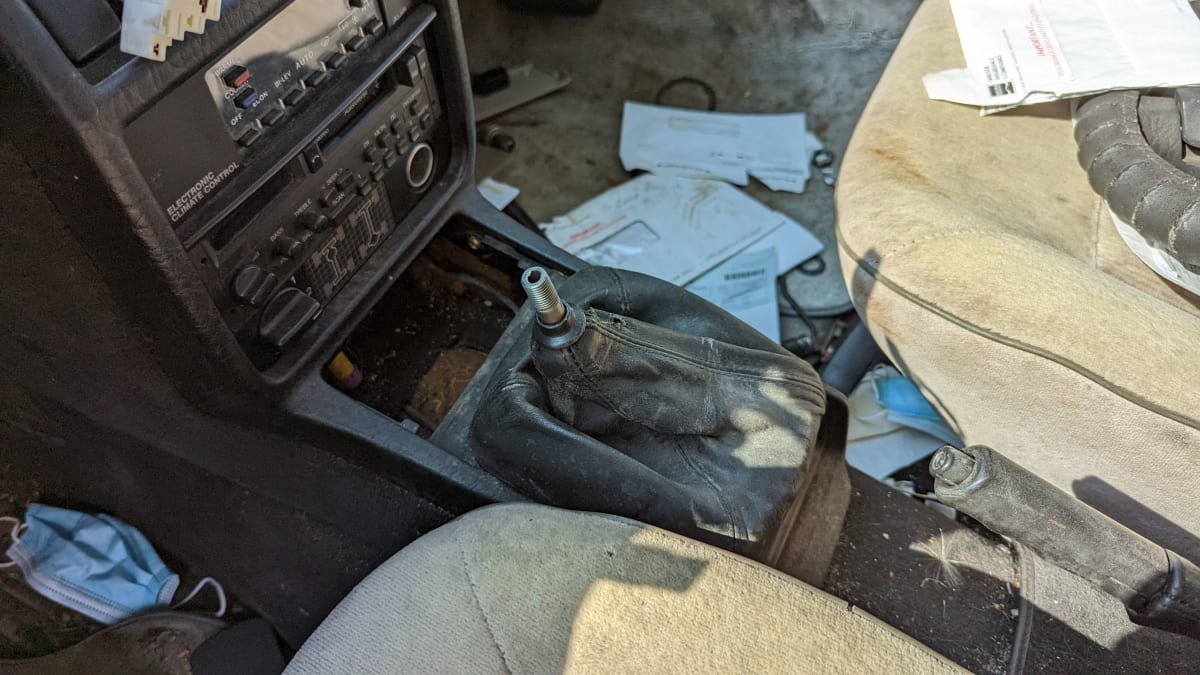
We can’t talk about the 5000 without addressing the “unintended acceleration” controversy that kneecapped Audi sales in the wake of a November 1986 “60 Minutes” piece alleging that 5000s with automatic transmissions sometimes lurched forward when the driver pressed the brake pedal. Much highly publicized arglebargle followed, with the upshot being that everyone involved looked bad and U.S.-market Audi sales — not just the 5000, all Audis — fell off a cliff and didn’t recover until well into the 1990s. This 5000 has a five-speed manual transmission, so it wouldn’t have been subject to the alleged problem; in fact, the original buyer may have scored a screaming deal on this car, which was built in June 1987 and thus hit a depopulated showroom floor at the height of the Unintended Acceleration hooraw.
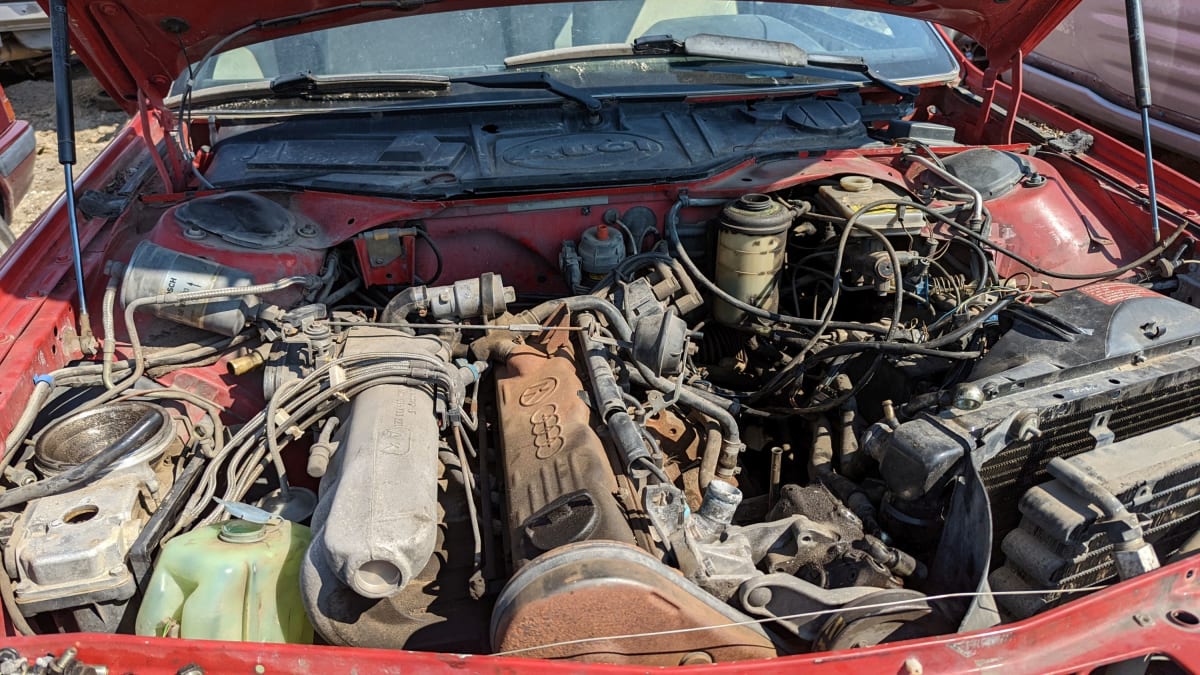
Most American buyers who were willing to pay extra for Audi’s Quattro all-wheel-drive system also peeled off the extra bills to get the turbocharged engine, so naturally aspirated 5000 S Quattros were rare beasts. This straight-five displaced 2.3 liters and made 130 horsepower, while the turbo version whooshed out 162 horses. If you think this engine compartment looks like the one in the Volkswagen Quantum Syncro from the same era, you’re right!
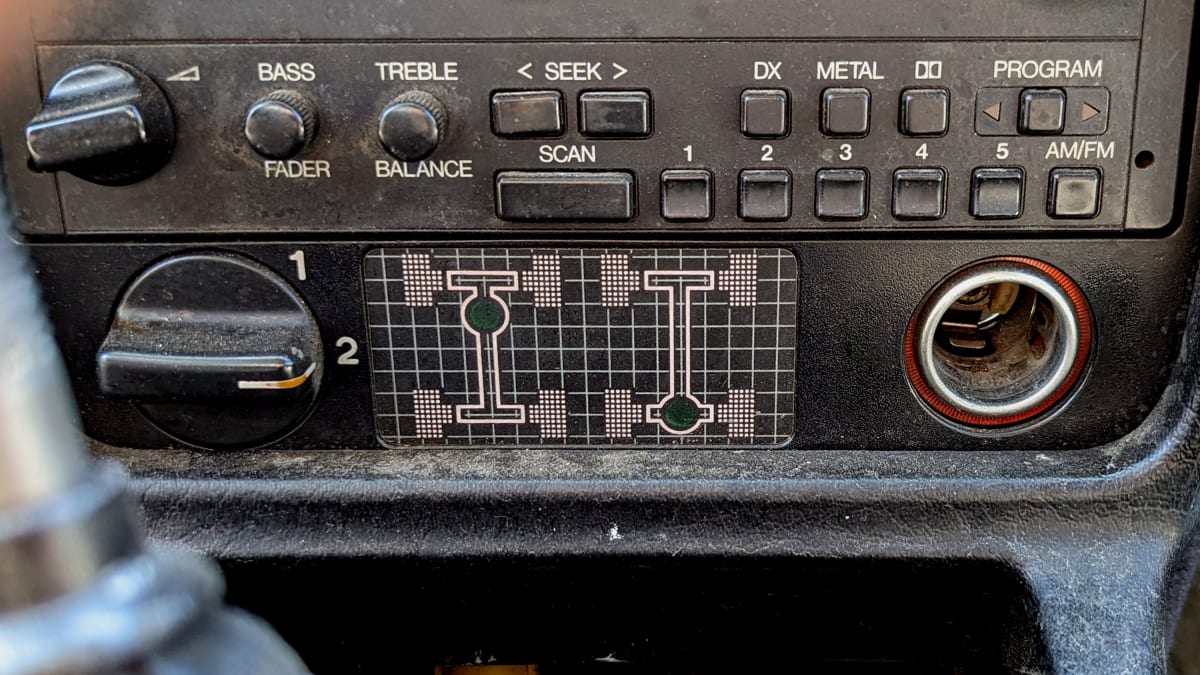
The Quattro system first appeared in the United States on 1983 Audis, following in the footsteps of the revolutionary all-wheel-drive rig introduced in 1979 by American Motors on the Eagle. By the late 1980s, many other car companies offered true all-wheel-drive systems, but AMC and Audi competed only against four-wheel-drive cars for much of the decade. This differential-lock control setup was much cooler-looking than the one Toyota used in the Camry All-Trac later on.
Related: AWD vs. 4WD: What’s the difference, and which is better?
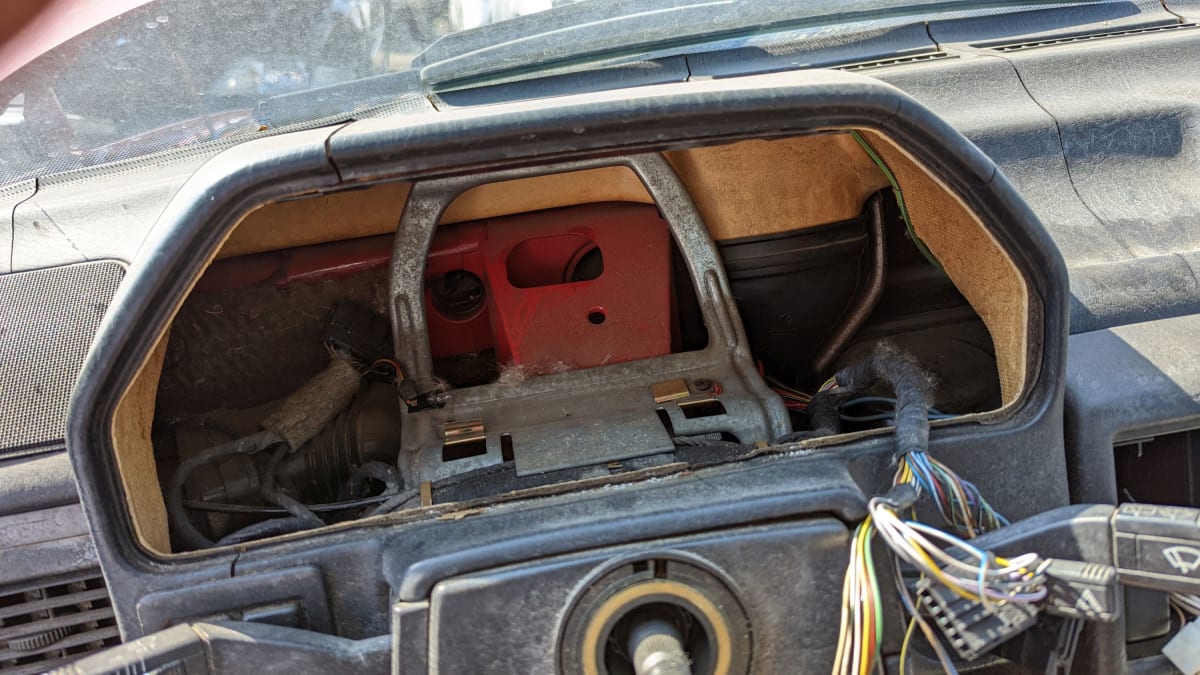
Someone bought the instrument cluster, so we can’t know how many miles this car drove during its 35 years on the road.
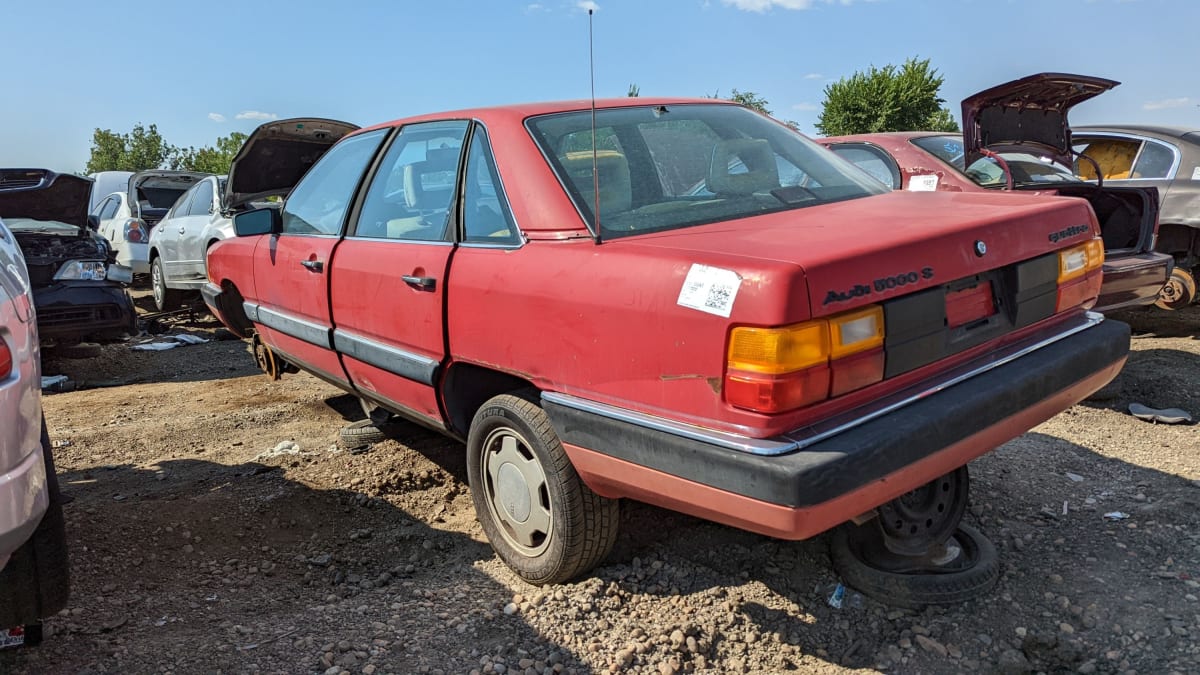
The MSRP on this car was $24,450, or about $65,120 in 2022 dollars. Ford was offering AWD versions of the Tempo and Mercury Topaz in 1987, priced at just $9,984 and $10,119 ($26,590 and $26,950 today), but it’s doubtful than any potential Audi 5000 buyer would have considered those cramped, underpowered machines.
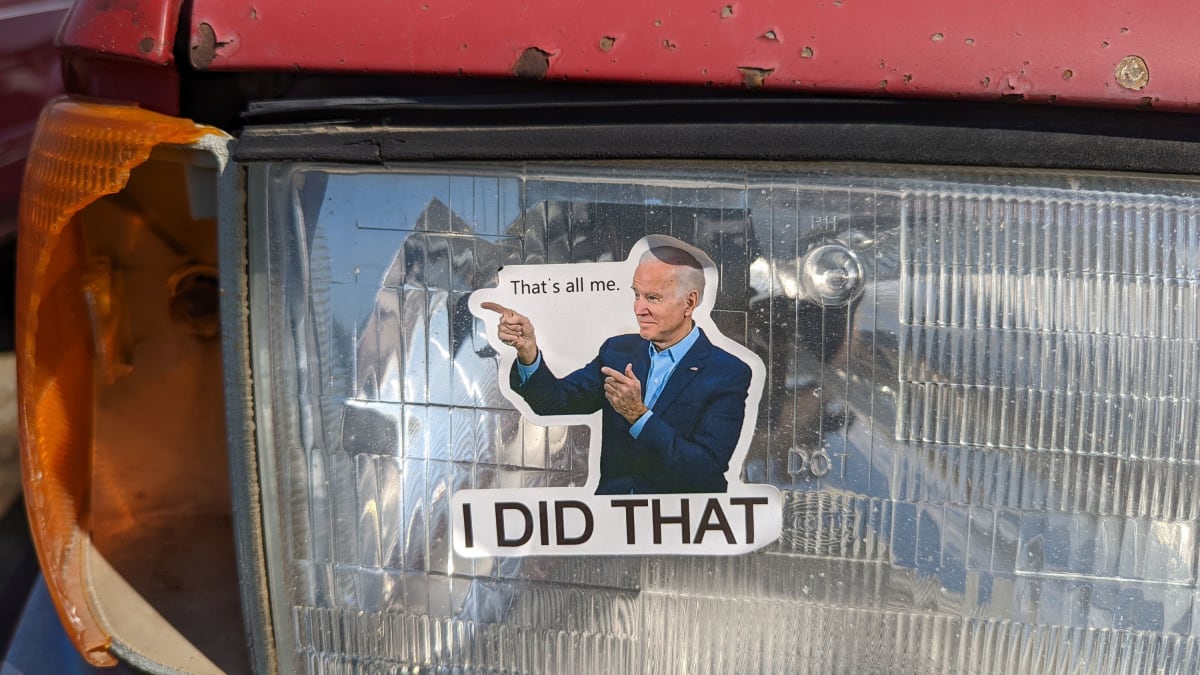
It appears that Joe Biden took time out from washing his Trans Am to have an Audi 5000 dispatched to The Crusher’s waiting room. Or perhaps this sticker refers to the 360,000-mile Toyota Tercel parked in the next space.
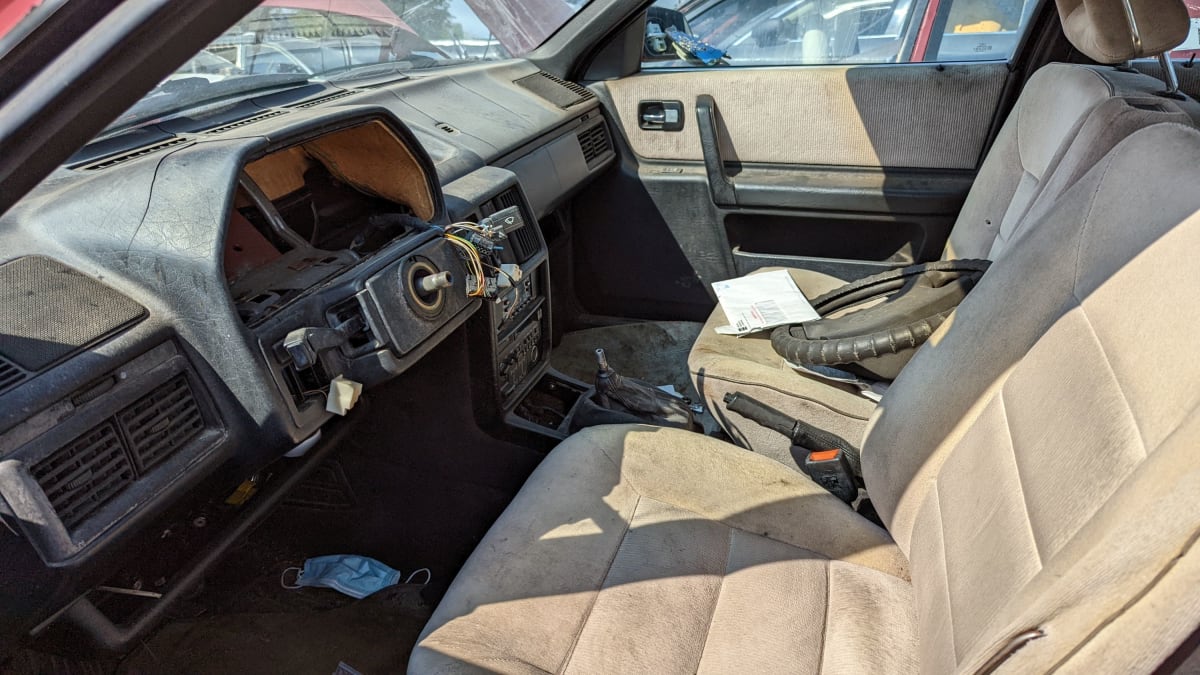
There’s no rust, the body is reasonably straight, and the interior would be nice with a thorough cleaning. Sadly, these cars aren’t worth much nowadays, so nobody rescued this one.
Built to be abused in the city.
Cruelly, CBS played this commercial during “60 Minutes,” about two weeks before the fateful Audi 5000 episode.
Let’s watch the home-market version now. Don’t try this on your ski jump at home!
FAW built Hongqi-badged Audi 100s in China from 1989 through 2004.





